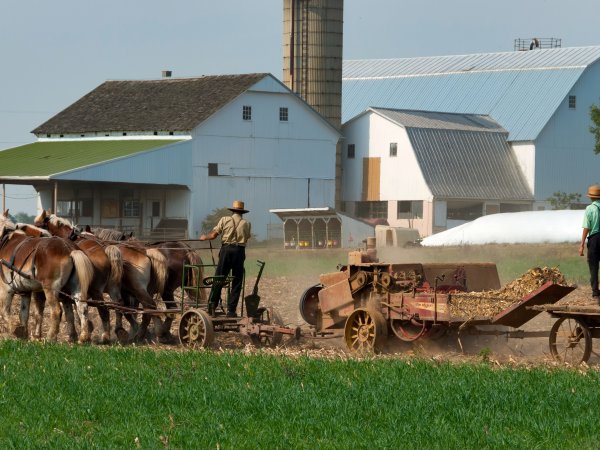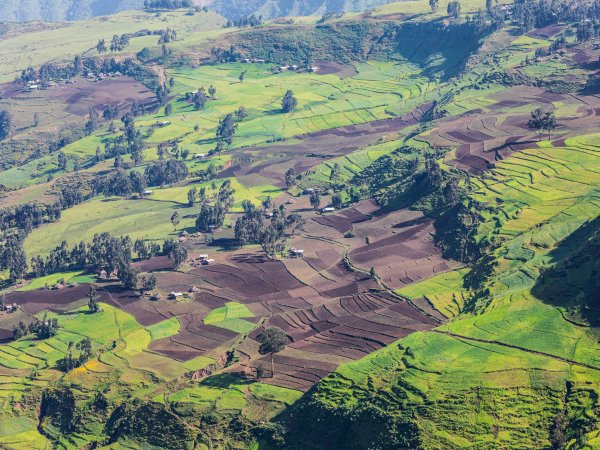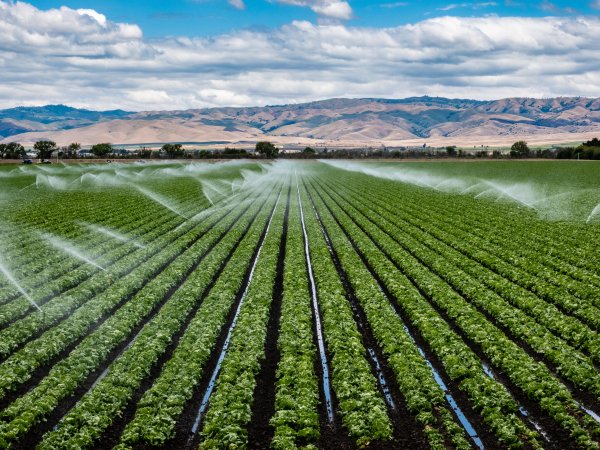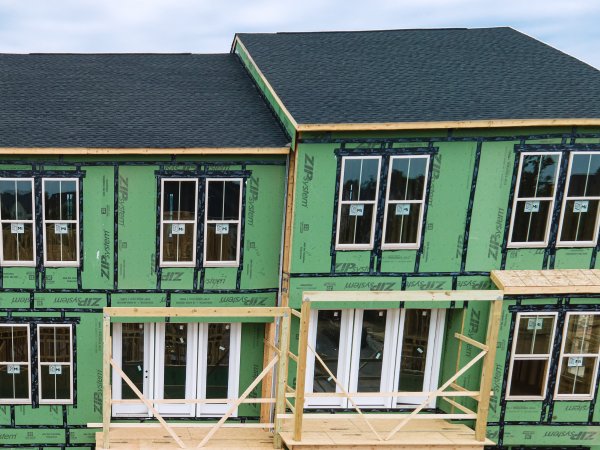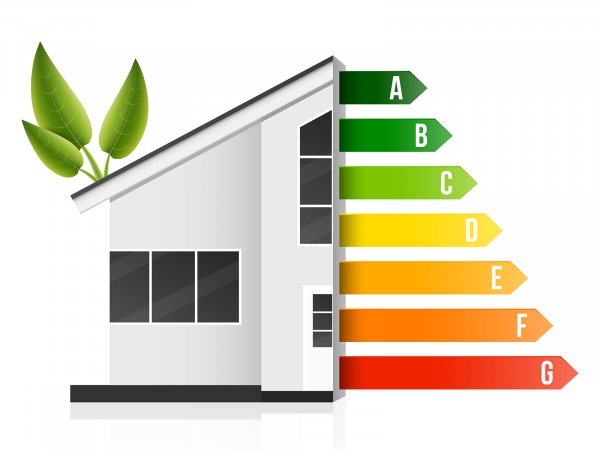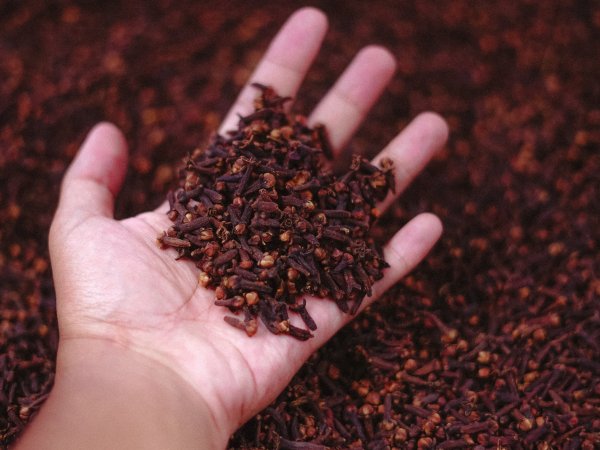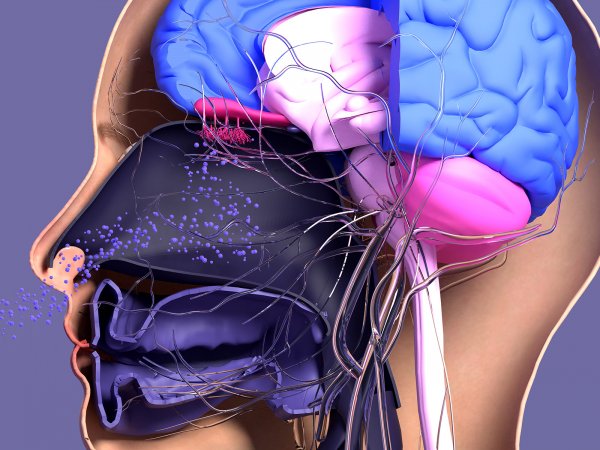Funded Projects
The following 18 projects were awarded seed grant funding in the 2019 IEE Seed Grant Program.
Addressing Potential Health Effects Due to Drinking Water Quality among Humans and Animals in Plain-Sect Community Using Community-Based Approaches
Lancaster County, which is home to a large plain-sect population, annually produces 72 million pounds of nitrogen from animal manure, which is considerably more than the absorptive capacity of local farms. The excess manure has documented pollution effects on the local water resources, including groundwater via excess nitrates and bacteria. This is concerning since groundwater is the primary source of drinking water mainly from private wells, which are not federally regulated.
Characterizing Food-Energy-Water Systems in Ethiopia
This interdisciplinary project will examine development challenges in three agroecological zones of Ethiopia through the lens of integrated food-energy-water (FEW) systems. Leveraging existing relationships with partners in Ethiopia, we will conduct in-depth case studies of three Ethiopian communities. These case studies will describe the main components of the FEW systems in each location, understand the interactions between these components, and identify the links between FEW systems and development challenges (e.g., poverty, food insecurity) in the three study communities.
Developing Integrated Low-Cost Sensors for Improving Building Environmental Performance
As Americans spend majority of their times (>20 hours daily) indoors, indoor environments play critical roles in human exposure to air pollutants and health implications. The first step to creating a healthy and comfortable indoor environment is to monitor critical indoor air pollutants. Traditionally, indoor air quality sensors have not been integrated into building monitoring systems due to high cost and lack of performance. With recent advances in sensing technology, several low-cost sensors become available for indoor air quality (IAQ) monitoring.
Herbarium Specimens as Microbial Time Capsules in the Face of Global Change
Understanding the role that microbial communities play in biological invasions is an emerging challenge in invasion science1. In this project, we will use metagenomic data from natural history collections of invasive plants as a novel means to understand the microbial ecosystems associated with plant invasion. Mined from leaf tissue from ~800 herbarium specimens of blue mustard (Chorispora tenella), an invasive and agricultural weed of western North America, we will use microbial DNA as evidence of how microbial ecosystems and their relationships with plants have been affected by global change over the last century2.
Identification of Links between Surface Water Microbiomes and Microbiological Water Safety
With the rapid growth of global population, there is an increasing demand for clean water for food crop production. Surface waters that are currently the most commonly used for irrigation of food crops will soon not be sufficient to meet this demand. Hence, there is a growing need to evaluate water recycling solutions for energy efficiency and microbiological safety. Currently established methods for microbiological safety testing of water rely on microbial indicators that too often fail to indicate the presence of foodborne pathogens.
Identifying Sweet Spots for Green Stormwater Infrastructure Interventions in Pennsylvania Urban Communities
Cities across the US are struggling to better manage stormwater quantity and quality to comply with Clean Water Act standards, as well as to enhance their resilience to projected changes in precipitation under climate change. Many cities are looking to green stormwater infrastructure (GSI; e.g. bioswales, porous pavement) as a strategy to manage these issues in a cost-effective manner, but they often struggle to find the resources to best implement GSI.
Increasing Power Densities and Cycle Efficiencies of Novel, Thermally Charged Flow Batteries Using Advanced Flow Cell Topologies
The objective of the proposed work is to develop recently-invented thermally-rechargeable flow batteries (TRFBs), that already have power densities higher than other thermal conversion technologies, into a commercially-viable grid-level energy storage and power production technology that is fueled by industrial waste heat. The proposed work has the potential to transform this new clean energy technology and is highly relevant to Penn State’s goal of being a leading Energy University and the IEE strategic priority area focused on our Future Energy Supply.
Lighting Up the Subsurface for Tomorrow’s City: Initiating a Penn State Distributed Acoustic Sensing (DAS) Array for Monitoring Geo/Environmental Hazards
The Penn State DAS array (PSDASA), a subarray of the FORESEE project, is to revolutionize seismic monitoring of the urban area through a novel use of fiber optic cables to improve hazard assessment and increase early warning capability. We propose to develop a 4 km long DAS array leveraging the existing telecommunication fiber-optic cables (unused, so-called dark fiber) underneath the Penn State campus in State College, PA.
Modeling the Risk of West Nile Virus to Ruffed Grouse Populations in Pennsylvania
West Nile virus (WNV), a virus transmitted by mosquitoes, causes high mortality in many native birds. As WNV spread through Pennsylvania in 2000-2002, populations of ruffed grouse (Bonasa umbellus) - the Pennsylvania State bird- suffered significant declines. Statewide grouse populations remain at record lows. WNV has been well-studied in human-dominated environments, but epidemiology in woodland systems is little-understood despite population-level declines in vulnerable species.
Practical Photovoltaic Daylighting
Windows and skylights that generate solar electricity, or that adjust their opacity to control room lighting and solar heat gain, feature prominently in most visions of future energy-efficient building technology. Transparent photovoltaics (PV) and electro/thermochromic glass are currently being pursued to achieve these respective goals, but neither works well at present and both hinge on the development of new materials that are unproven in the building industry.
Quantifying Enhanced Performance of Passive House (PH) over Conventional Buildings
The Passive House (PH) standard relies on enhancing building envelope performance to minimize thermal and moisture loads of a building. PH can leverage collaborative efforts by different project stakeholders to create an energy-efficient approach in different climates. Although the use of PH concepts may increase initial building construction costs this investment is thought to be returned over time.
Rare Earth Element Enrichment from Mining Wastewater Streams
Water scarcity and pollution is of global concern. Industrial and mining operations are among largest users of water and one of the largest polluters. Wastewater produced by the mineral and coal industry is an environmental concern due to its total suspended and dissolved solids. So far, this wastewater has been treated as waste. However, such wastewater, on the other hand, contains critical elements such as rare earth elements. Rare earth elements (REE) are vital to the U.S.
Resilient and Energy Efficient Envelopes for Passive House Standard Buildings
One-third of the energy used to heat a typical house is lost by air leaking through the walls or roof. Consequently, new houses built to standards that require minimal energy to provide thermal comfort rely on airtight building envelopes. While the efficacy of the air barrier in these houses is tested during construction and initial occupancy, there has been no research conducted into the resiliency of these air barriers to minor or major displacements caused by earthquakes, wind or other forces.
Searchable Performance Database for Design of Ultra-High-Performance Envelope (UPHE) Buildings in Varied Climatic Conditions
The project aims to establish the data fields and data format structure of a database of energy utilization and indoor environment performance metrics of buildings having documented ultrahigh performance building envelope (UHPE) designs and associated heating, ventilation and cooling (HVAC) technologies. With the assistance of personnel from the Passive House Institute (Germany) and North American Passive House Network (NAPHN), the project also seeks to establish an initial data population within the structured database.
The Impact of Ecosystem Change and Resilience on Crop Quality and Farmer Livelihoods – Cloves (Syzygium aromaticum) As a Model
Specialty crops including fruits, nuts, medicinal plants, and spices represent an important part of the world agricultural economy. Their value is driven not only by availability but also perceived quality as judged by wholesalers, processors, and end-users. In the case of spices and related essential oils, quality is driven by the composition of volatile and non-volatile phytochemicals.
The Role of Olfactory Neuron Death in Particulate Matter-Induced Neurodegeneration
Air pollution, specifically particulate matter in the 2.5 micron (PM2.5) range, is a ubiquitous health hazard in the developed and developing world. Recently, it has been found that air pollution is not only damaging to lungs, but it is implicated in the development of Alzheimer’s Disease (AD) and other neurodegenerative diseases. However, there is no known biological mechanism for air pollution’s effects, and it has been hard to study the mechanistic basis of the damaging effects of particulate matter in the lab.
Uncertainty-Aware Transactive Building Controls
This project will prototype a building energy control system that enables operations to be optimally coordinated in consideration of uncertainty. Novel algorithmic advancements are proposed to improve the efficiency and scalability of stochastic optimization methods when applied to problems in the high-performance building and electric grid domains. The performance of the uncertainty-aware controller will be evaluated through co-simulation by coupling the controller with detailed, physics-based building energy simulation models.
Visualizing and Experiencing Changes to the Critical Zone
The purpose of our collaboration is to develop an interdisciplinary program of research aimed at using and understanding how immersive virtual experiences and simulations (IVE&S) can educate the public about the Critical Zone (CZ) and, more specifically, the Food-Energy-Water (FEW) Nexus. We propose that immersive virtual experiences in the CZ (which have never been created) can enhance systems thinking, connections to nature, and emotional states that will facilitate awareness of the FEW Nexus and support for efforts to address related security issues.
IEE-MRI Funded Projects
Materials For Enhancing Energy And Environmental Stewardship
IEE and the Materials Research Institute put out a call in 2018-19. The recipients are as follows:
Advancing Energy Storage
New Low-Cost Flow Battery Chemistries via Ligand-Enhanced Redox Reactions
Derek Hall, EMS Energy Institute
Christopher Gorski, College of Engineering
Novel Dielectric Polymer Nanocomposites for High Energy Storage
Bladamir Ramos Alvarado, College of Engineering
Adrianus van Duin, College of Engineering
Qiming Zhang, College of Engineering
Hybrid Inorganic-Organic Crystal Structures from Mid-IR and/or Microwave Photo-Voltaic (PV)-Cells
Compositional Engineering of Perovskite-Based Photovoltaics Using Data-Driven Multiscale Modeling
Jiawei Gong, Penn State Behrend
Baiou Shi, Penn State Behrend
Single-Crystalline Perovskite Membrane for Ultrahigh Efficiency Photovoltaics
Kai Wang, College of Engineering
Congcong Wu
Tunable Nano-textured Perovskite Tandem Cells
Ola Rashwan, Penn State Harrisburg
Joan Redwing, College of Earth and Material Sciences
Low-Cost Environmental and Food Sensors for Real-time Seasonal Field Monitoring and Food Storage
Combinatorial gas sensing with flexible mixed metal oxide heterostructures from direct laser writing
Lauren Zarzar, Eberly College of Science
Huanyu Cheng, College of Engineering
High-Precision and Real-Time Environmental Sensor Empowered by 2D Materials
Shengxi Huang, College of Engineering
Hangsheng (Henry) Lin, College of Agricultural Sciences
Single-Crystalline Perovskite Membrane for Ultrahigh Efficiency Photovoltaics
Kai Wang, College of Engineering
Congcong Wu
Tunable Nano-textured Perovskite Tandem Cells
Ola Rashwan, Penn State Harrisburg
Joan Redwing, College of Earth and Material Sciences
Novel Concepts and Materials in Energy Conversion
Breakthrough Ultra-Wide Bandgap Electronics Enabled by 2D Heteroepitaxial Growth and a Multi-Functional Passivation Scheme
Sukwon Choi, College of Engineering
Joshua Robinson, College of Earth and Mineral Sciences
Caloric Materials for Generating Large Caloric Effect Under Low Driving Fields
Qiming Zhang, College of Engineering
Huanyu Cheng, College of Engineering
Direct conversion of chemical energy to electricity: chemivoltaics
Enrique Daniel Gomez, College of Engineering
Christian Pester, College of Engineering
Discovery of New Catalytic Materials for Energy Conversion
Raymond Schaak, Eberly College of Science
Zhiqiang Mao, Eberly College of Science
Exploration of Giant Electrocaloric Effect from Amorphous-Crystalline Transition in Polymers for Next-Generation Solid-State Cooling Devices
Qing Wang, College of Engineering
Qiming Zhang, College of Engineering
Ismaila Dabo, College of Earth and Mineral Sciences
Kinetic studies of intermetallics catalysts for electrochemical energy conversion
Michael Janik, College of Engineering
Michael Hickner,College of Earth and Mineral Sciences
Robert Rioux, College of Engineering
Zero-Volt Rectifier for Energy Harvesting
Rongming Chu, College of Engineering
Joan Redwing, College of Earth and Mineral Sciences
Smart and Adaptive Energy Systems
Smart Transformer Based on Gallium Nitride (GaN) Switches to Compensate Effect of Solar Energy Intermittency in Microgrids
Arash Khoshkbar-Sadigh, College of Engineering
Javad Khazaei, College of Engineering
Peter Idowu, Penn State Harrisburg
RFP
Penn State’s Institutes of Energy and the Environment (IEE) has five strategic research themes of focus (listed alphabetically): Climate and Ecosystem Change; Future Energy Supply; Smart Energy Systems; Water and Biogeochemical Cycles; and Health and the Environment. This year our seed grant program will support each of these themes as we do each year. In addition, this year we are interested in supporting three crosscutting topics: Food-Energy-Water Systems, Ultra-High Performance Buildings, and Energy and Environmental Resilience. Each of these crosscutting topics is briefly described below
IEE established our Seed Grant Program four years ago to foster basic and applied research focused on strategic interdisciplinary research that leverages faculty expertise across the university. Over the previous rounds, IEE has awarded over $2 million to 96 interdisciplinary projects with investigators from 15 Penn State colleges and campuses. This year, we are increasing the size of our inter-campus and intercollege grants to a maximum of $50,000. For 2018-2019, at least $500,000 of funding is available.
Preferred activities for funding under the Seed Grant Program are:
-
Development of new interdisciplinary research teams to position them for substantial external funding success;
-
Novel research in theme areas, especially high-risk proof of concept projects; and
-
Collaboration between junior and senior faculty to promote research development, mentorship.
Please note that Health and the Environment proposals should respond to this RFP. THERE WILL NOT be a separate Health and the Environment RFP call this year. We will be accepting proposals for all five of the IEE research themes and this year’s three strategic priorities through this call.
In addition, to increase the impact of the Seed Grant program and align with expanding federal and foundation opportunities we will be giving consideration to proposals addressing the following three strategic topics:
-
Food-Energy-Water Systems. This topic is emphasized in the Penn State University Strategic Plan’s Stewarding our Planet’s Resources thematic priority: “with a projected global human population of 8 billion by 2040, food and water consumption is expected to increase by 50 percent, and energy requirements by even more. Urgent research, development, and implementation needs exist regarding water, energy and food, and there are even more pressing challenges in effectively, ethically, economically, and sustainably managing the interactions among them...” Additional details are at: https://strategicplan.psu.edu/thematic-priorities/stewarding-our-planets-resources/
-
High Performance Building Systems. Penn State has been endorsed by the United National Economic Commission for Europe (UNECE) to lead the Buildings Global Buildings Network, an international research and education effort to dramatically reduce building energy use while increasing occupant health and quality of life. An “Ultra” High-Performance building system is a building or community of buildings capable of achieving net zero carbon-based energy utilization while delivering measurable indoor environment parameters, leading to quantifiable increased occupant performance and reduced health risks. The required building system paradigm shift can be achieved by an integrated systems design, delivery and operation of buildings that includes explicit enabling of proactive occupant interaction. Realizing such a building system paradigm shift requires the convergent research of several very different disciplines including but not limited to architectural engineering, architecture, information technologies, materials science, distributed energy technologies, human behavior and health sciences, investment and finance models, regulatory and policy issues. A document describing this research agenda is available online to Penn State accounts at: https://psu.box.com/s/gt3lfbn198fc11z61dlpre8f08ag4vv5
-
Energy and Environmental Resilience. Flood, drought, blackouts, gridlock...many human and natural systems are under increasing stress from climate, population and development, and the many dimensions of consumption. It is imperative that we understand the impacts of these stresses, the ability of systems to withstand, recover or adapt, the dynamics of tipping points, and the design principles required for establishing more robust and resilient systems. These impacts, responses and design principles can apply to ecosystems, agriculture and forests; to water, energy and transportation infrastructure; and to communities and regions. This strategic priority encourages proposals that will advance the scholarship of resilience focused on energy and/or environmental applications.
Seed Grant Eligibility
All Penn State faculty members (tenured, tenure track, and fixed term) who hold an appointment of half-time or more at any Penn State campus are eligible to submit a seed grant proposal as a Principal Investigator (PI). Researchers, students and staff from Penn State, Pennsylvania state agencies, federal agencies, and private industry may be included as collaborators in seed grant proposals. Please note that while most proposals are expected to include multiple investigators, there can only be one responsible PI for each application. In addition, investigators may only serve as PI on a single proposal. New investigators will be given preference over those who may have previously received an IEE seed grant.
Funding Availability
To encourage establishment of new collaborations and enhancement of networks, larger grants will require innovative partnerships of investigators from multiple colleges and/or campus locations. Funds up to $50,000 are available for multi-college (across University Park) and multi-campus (between campuses) collaborative grants; up to $10,000 for two or more faculty from the same college (University Park) or at a single Commonwealth Campus; and up to $5,000 for a single investigator project.
Funds can be used to support research development and coordination expenses such as:
-
Graduate and undergraduate student support
-
Instrumentation fees and sample analysis to collect preliminary data
-
Equipment, supplies, and participant payments
-
Travel associated with conducting/reporting seed grant research (Penn State participants only)
-
Hosting a research planning meeting for an interdisciplinary team
-
Planning and hosting conferences and symposia
-
Funding for data conversion technology and wages to support date conversion
Funding is limited or not allowed for the following:
-
Single college/campus funding, even with faculty from several departments, is capped at $10,000
-
Summer or supplemental salary support for faculty
-
Postdoc salary
-
Travel support to attend conferences
Submission Instructions
All pre-proposals must be submitted electronically via upload from the link at https://psu.infoready4.com/#competitionDetail/1775623 no later than 5:00 pm on Wednesday, November 7, 2018. Each pre-proposal is limited to a 1-page project description and additional pages for an appendix.
The one-page project description must include the following:
-
Title of project
-
List of PI and collaborators, including college, department and/or campus
-
Short description of the project (understandable by an interdisciplinary audience)
-
Short description of how this project will leverage seed funding
-
Nature of collaboration (new/existing; mentorship opportunities)
-
Total funding to be requested, including short description of anticipated expenditures
The appendix will include a list of all collaborators, their colleges and/or departments, and 1-page resumes for the PI and all co-PIs.
Timeline for pre-proposals and proposals (note, all deadlines are Wednesdays)
Oct. 10, 2018 11:00-12:00 Informational webinar for pre-proposal questions
Nov. 7, 2018 Pre-proposals due no later than 5:00 pm
Nov. 14, 2018Pre-proposal notifications; full proposals requested
Dec. 19, 2018 Full proposals due no later than 5:00 pm
Week of Feb. 4, 2019 Seed Grant funding decisions announced
Grant funds will be available by April 1, 2019 and must be expended by June 30, 2020.
Review Criteria
Pre-proposal and Proposal reviews are based upon the following criteria:
-
Intellectual merit of the proposal, including relevance to strategic priorities and contribution to global leadership in a prioritized theme; creativity and innovation; significance of goals and results; soundness of research plan; and likelihood of successful project completion. Please note that these proposals are reviewed by a cross section of researchers with different backgrounds; your ability to communicate your ideas to a broader audience is important for success with interdisciplinary project review panels.
-
A credible and clearly articulated strategy for leveraging this seed grant investment into exceptional scholarship and/or significant external funding. Potential for additional/continued activity beyond the seed grant phase may include plans for continued activity such as applications for external support from federal, state or local government agencies, industry, private foundations, etc.; plans for continued research activities involving in-kind support, teaching activities, on-going scholarly work, etc.; plans for public engagement and outreach; and expanded implementation by external stakeholders. Providing specific examples, including specifics of external funding opportunities, contact with program officers, etc. has been helpful in establishing the credibility of these strategies to prior seed grant reviewers.
-
Realistic potential for developing new and productive collaborations between PIs, with special consideration given to mentorship and collaborations between junior and senior faculty. Possibilities for additional activities and projects which draw upon the seed grant partnership should be specified.
-
Appropriateness of the budget request for supporting the proposed research.
-
Extra consideration will also be given to projects that are able to take data and help leverage that into knowledge and on the ground impact. For more on this criterion, see http://www.iee.psu.edu/research.
Pre-proposals will be reviewed by a set of reviewers, and categorized as “Request Proposal” or “Do Not Request Proposal.” Those invited to submit a full proposal will be given additional information.
Please direct any questions regarding the proposal process to iee@psu.edu.
Review Committee
- Robert Chiles
- Robert Crane
- Susannah Gal
- Heather Gall
- Sarah Ivory
- Michael Janik
- Klaus Keller
- Benjamin Lear
- Esther Obonyo
- Curtis Omiecinski
- Gary Perdew
- Erica Smithwick
- Herbert Wolfe
- Jeffrey Yanosky

